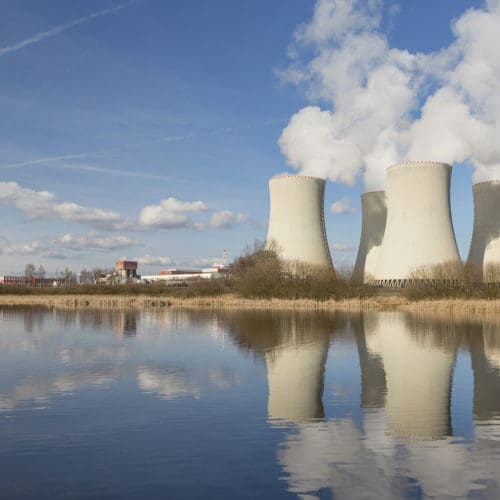Former executives ordered to pay £80 billion in damages over Fukushima nuclear disaster: an example of what could come for those at the frontline of managing risk
July 2022Last week, a Tokyo District Court ordered four former executives of Tokyo Electric Power Company to pay the company ¥13.32 trillion (£80 billion) in damages for failing to prevent a triple meltdown at the Fukushima Daiichi nuclear power plant in 2011, which was one of the worst nuclear disasters in history.
Background
In 2012, the former executives of the plant operator, Tokyo Electric Power Company (“Tepco”) were sued by 48 shareholders over the nuclear disaster which happened on 11 March 2011 (“Fukushima disaster”) and was trigged by a massive earthquake and tsunami, which killed more than 180,000 people along Japan’s north-east coast.
Systems at the nuclear power plant detected the earthquake and automatically shut down the nuclear reactors. Emergency diesel generators turned on to keep coolant pumping around the cores but unfortunately soon after a wave over 14 metres (46ft) high hit Fukushima. The water overwhelmed the defensive sea wall, flooding the plant and knocking out the emergency generators. Workers rushed to restore power, but in the days that followed the nuclear fuel in three of the reactors overheated and partly melted the cores – something known as a nuclear meltdown.
The plant also suffered several chemical explosions which badly damaged the buildings. Radioactive material began leaking into the atmosphere and the Pacific Ocean, prompting the evacuations and an ever-widening exclusion zone.
The Fukushima disaster generated a massive clean-up, compensation, and decommissioning costs for Tepco, whilst forcing the evacuation of hundreds of thousands of people living nearby. No one was killed in the disaster, but there are reports that several people died in the evacuation, and the long-term effects of the radiation remain a matter of debate.
In 2012, Japan’s then prime minister, Yoshihiko Noda, said the state shared the blame for the disaster. A court ruled in 2017 that the government bore partial responsibility and should pay compensation to evacuees.
In 2018, the Japanese government announced that one worker had died after exposure to radiation and agreed his family should be compensated. More recently, six young Japanese people sued Tepco for $5.4m (£4 million) in compensation after developing thyroid cancer which they alleged was caused by radiation exposure in the years following from the Fukushima disaster.
The Fukushima Disaster is classified as a level seven event by the International Atomic Energy Agency, the highest such event and only the second disaster to meet this classification after the 1986 Chernobyl nuclear power incident in Ukraine.
The clean-up operation in north-eastern Japan continues. According to media reports, tens of thousands of workers will be needed over the next 30 to 40 years to safely remove nuclear waste, fuel rods and more than one million tons of radioactive water still kept at the site.
The decision
According to media reports, the ruling in favour of the shareholders marks the first time a Court has found former Tepco executives liable for compensation after the Fukushima disaster.
The ruling was centred on whether senior Tepco management could have predicted a serious nuclear accident striking the facility after a massive earthquake and tsunami. Tepco shareholders argued the Fukushima disaster could have been prevented if bosses had acted on research and carried out preventative measures like placing an emergency power source on higher ground.
The court found that the executives could have prevented the Fukushima disaster if they exercised due care. The court said that the company’s countermeasures against the tsunami “fundamentally lacked safety awareness and a sense of responsibility”. Tepco argued it was powerless to take precautions against a tsunami of the size that struck in March 2011, and that it had done everything possible to protect the nuclear power plant however, an internal document revealed in 2015 that it had been aware of the need to improve the facility’s defences against tsunami more than two years before the disaster but had failed to act.
The shareholders also cited a government report that showed Tepco had predicted in June 2008 that the nuclear power plant could be hit by tsunami waves of up to 15.7 metres in height after a major offshore earthquake. The Court said that the government’s assessment had been reliable enough to oblige Tepco to take preventative measures.
The shareholders originally sought around ¥22 trillion (£133 billion) in compensation to be paid to the company.
Four defendants, including former President Masataka Shimizu, 78 were ordered to pay ¥13.32 trillion (£80 billion) in damages, while the fifth, former Managing Director Akio Komori, was not found liable for damages. The executives found liable are unlikely to have the capacity to pay the full amount, according to media reports, but will be expected to pay as much as their assets allow. The damages intended to cover the costs to Tepco for dismantling the reactors, compensating affected residents, and cleaning up contamination.
According to media reports, the shareholders’ lawyers said they believed the ruling to be the largest amount of compensation ever awarded in a civil lawsuit in Japan.
The ruling marks a departure from a criminal trial in 2019, where the Tokyo District Court found three Tepco executives not guilty of professional negligence (resulting in death and injury) as they could not have foreseen the huge tsunami that struck the nuclear power plant. The criminal case has been appealed and the Tokyo High Court is expected to rule on the case next year.
Comment
The ruling is not only a warning to all people involved in the management of an electric utility owning and operating nuclear power plants, but also an example of what could come for directors and officers who are the frontline of managing risk. It is interesting that the claim was in the form of derivative lawsuit where the directors have been ordered to pay damages to the company itself.
It feeds into the wider requirements for companies and their directors and officers to account for, and meet, environmental targets and to take steps to avoid environmental catastrophes and it may have the unintended consequence of deterring some directors from assuming roles in more inherently risky sectors.
There is no doubt that this judgment continues a worldwide trend of shareholders seeking personal accountability from directors and officers of large corporations and provides insight to insurers as to the emphasis which will need to be placed on environmental and climate change obligations in the future.
Indeed, some insurers have signalled their intention to reward businesses with clear and achievable ESG targets with lower premiums for D&O insurance. This is an aspect of business which faces significant challenges worldwide in the next few years and beyond and boardrooms should ensure that they have procedures in place to discuss targets and the correct foundations to implement any changes required to meet those targets. If not, then it seems that there could be a tsunami of claims facing those companies and their directors and officers.
Download PDF









